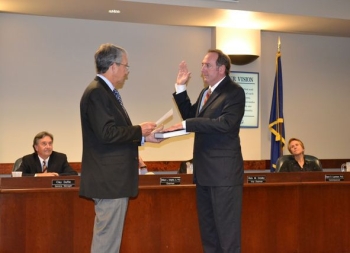Understanding the Role of Percipient Expert Witnesses in Personal Injury Cases
In personal injury litigation, the testimony of expert witnesses can be crucial in establishing liability and quantifying damages. While most people are familiar with the role of retained experts who provide opinions based on their specialized knowledge, there is another type of expert witness that can be equally valuable: the percipient expert witness.
What is a Percipient Expert Witness?
A percipient expert witness is someone who possesses specialized expertise and was also an actual observer or participant in the events or circumstances at the heart of the case. Unlike retained experts hired to analyze specific issues, percipient experts have first-hand knowledge and can provide testimony based on their perceptions and experiences.
In personal injury cases, percipient experts can come from various professional backgrounds, such as:
- Accident Reconstructionists
- Police officers who responded to the scene
- Treating physicians or healthcare providers
- Occupational safety inspectors
- Eyewitnesses with relevant technical expertise
The Value of Percipient Expert Testimony in Personal Injury Cases
Percipient experts offer a unique combination of specialized knowledge and direct involvement in the matter which lends significant credibility to their testimony.
Their insights can be invaluable in establishing key elements of a personal injury claim, including:
Liability and Causation
Percipient experts can shed light on how an accident or incident occurred, identify potential safety violations or negligent acts, and help establish the causal link between the defendant’s conduct and the plaintiff’s injuries.
Workplace Safety Standards
In cases involving workplace accidents or occupational hazards, safety inspectors or personnel with relevant expertise can testify about industry standards, safety protocols, and whether proper precautions were taken.
Injury Extent and Prognosis
Healthcare providers who treated the plaintiff from the initial injury through follow-up care are uniquely positioned to offer detailed, first-hand accounts of the full scope and severity of the sustained injuries.
Their percipient testimony can vividly illustrate:
Initial Trauma
Emergency room physicians, paramedics, or other acute care providers who first assessed and treated the plaintiff can powerfully depict the traumatic injuries and the plaintiff’s condition immediately following the incident. Graphic descriptions of the details of injuries, bleeding, fractures, and pain levels are more compelling and more likely to resonate with the jury when coming directly from someone who treated the injured party rather than an expert witness reciting medical records.
Diagnostic Testing and Results
Treating radiologists, surgeons, neurologists, and other specialists who diagnosed the extent of internal injuries via testing like CT scans and MRIs can explain their findings and how those findings guided the patient’s care plan.
Treatment and Recovery Process
The nurses, physicians, therapists, and other medical professionals who provided longitudinal care to the plaintiff can walk the judge and jury through each stage of treatment, surgeries, therapies, and even setbacks. This testimony humanizes the plaintiff’s experience rather than just reciting medical records.
Permanent Impairments and Future Needs
Percipient medical experts can also articulate the permanence of injuries like paralysis, disfigurement, and cognitive deficits. They can explain future life care needs, assistive devices, home accommodations, and other long-term consequences based on their direct interactions with the patient.
While hired experts risk appearing biased, percipient treatment providers establish significant credibility by simply recounting what they directly observed and did throughout the patient’s care. Their first-hand experiences make the plaintiff’s pain, suffering, and ongoing needs much more palpable and concrete.
Percipient Expert Witness Testimony Techniques
By preparing these key percipient witnesses appropriately, personal injury attorneys can transform things like medical records into vivid testimony that personalizes the client’s injuries and leaves a powerful impression on the judge and jury.
To maximize the impact of percipient expert testimony, experienced personal injury attorneys must carefully prepare these witnesses and strategically present their accounts.
Techniques may include:
- Establishing the expert’s qualifications and credibility
- Using visual aids, diagrams, or demonstrative exhibits
- Anticipating cross-examination questions aimed to address potential biases or inconsistencies; and
- Tying the expert’s testimony to specific legal elements or claims
Charleston Personal Injury Lawyers
Our personal injury team understands the significant role that percipient experts can play in building a compelling case.
If you or a loved one has been injured due to someone else’s negligence, our experienced attorneys can evaluate your case, identify potential percipient experts, and build a strong litigation strategy to pursue the compensation you deserve. Contact Rosen Hagood today to schedule a consultation.





















































































































































































